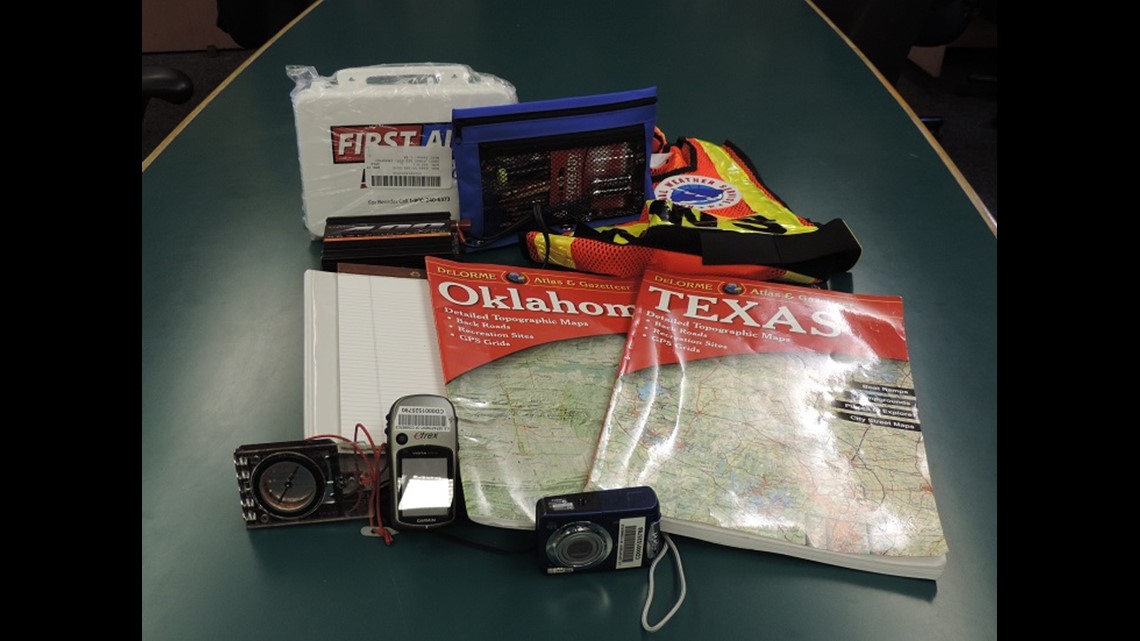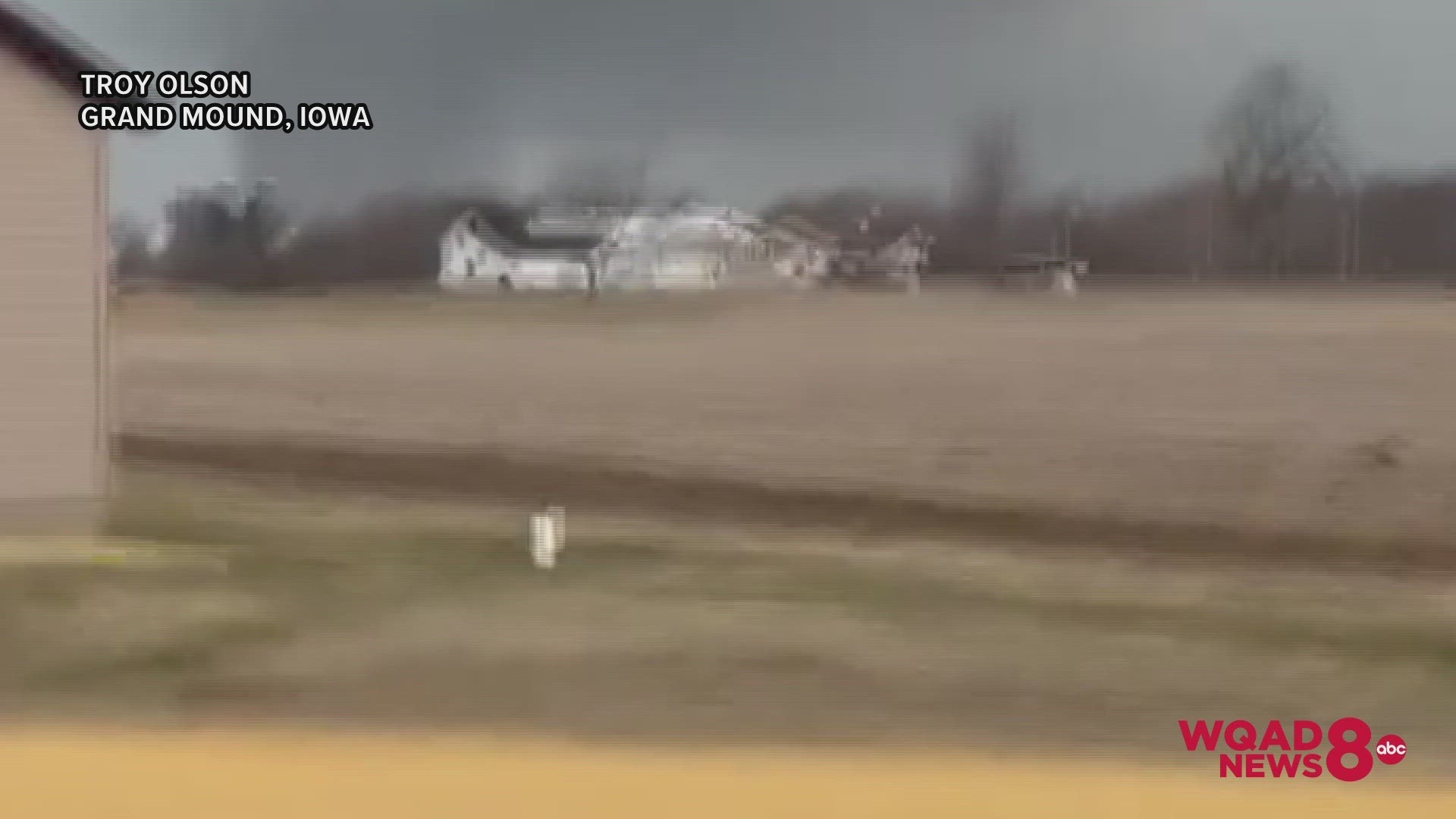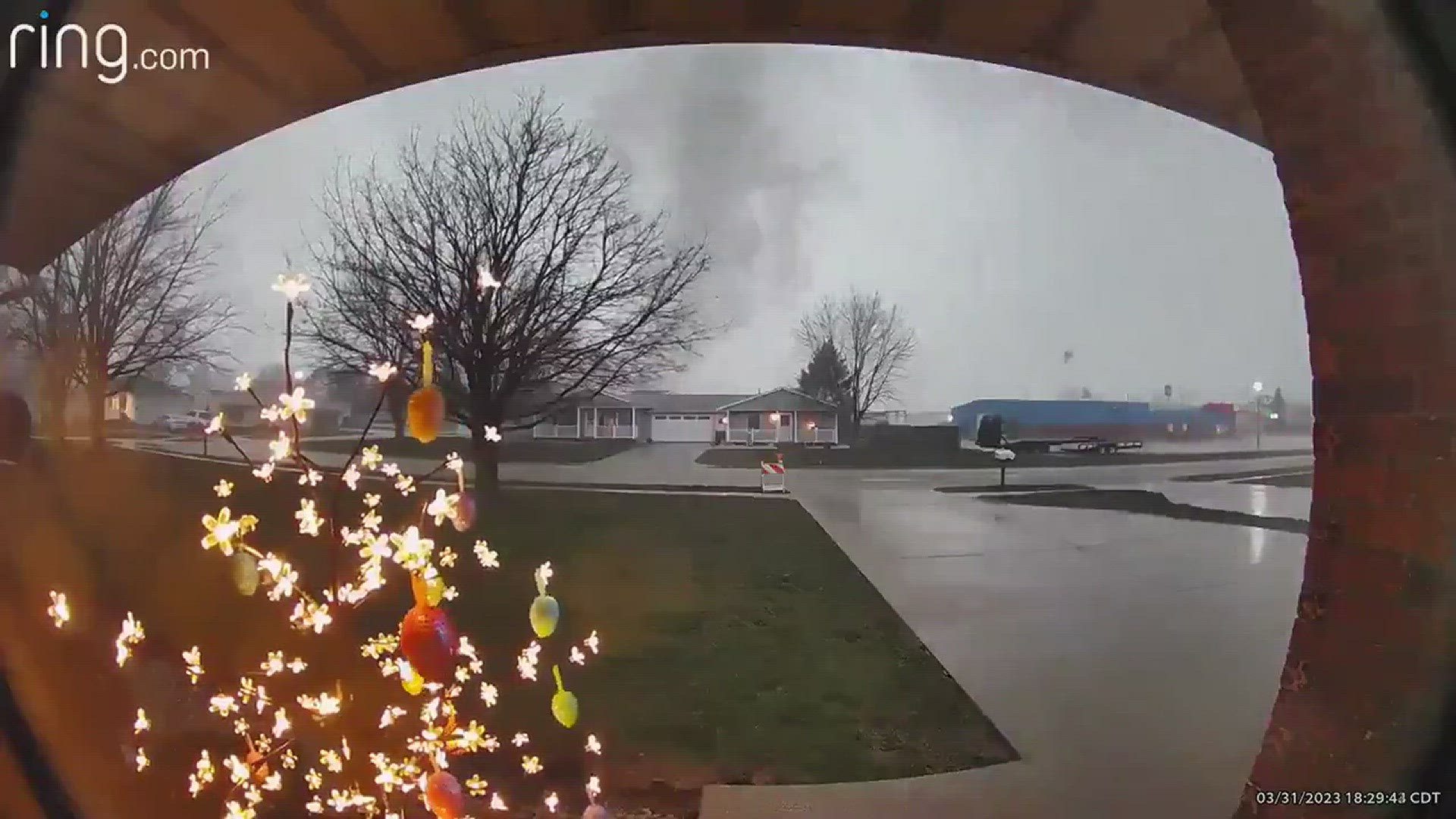MOLINE, Ill. — March left the Quad Cities like a lion, a very angry lion. A powerful early-spring storm system brought a widespread severe weather outbreak to the region, including multiple tornadoes being reported across Iowa and Illinois Friday evening.
So far, we know of two reported tornadoes in the WQAD region which the National Weather Service will be surveying this weekend. We may find out there are more once the final survey results are released. The weather service typically sends teams of meteorologists and damage assessment experts out to witness the storm's destruction to determine the strength of tornadoes and damaging straight-line winds from severe storms.
The team's goal is to reconstruct a tornado's lifecycle, much like an accident scene reconstruction specialist would do. This includes investigating when and where it initially touched down and lifted, its width, path length, and eventually the strength of the winds. Teams will use not only the physical damage as evidence but also witness interviews and even aerial photography/video as well. Amateur video from the public and storm chasers is also often used.


Before 2007, tornado strength was measured using the Fujita Scale. This system relied on wind speeds alone, not counting the quality of building construction. In 2007, the Enhanced Fujita Scale was put into widespread use after extensive research from engineers, meteorologists and other experts in academia. This is the scale we use today.
By the end of the weekend, we will likely know the strength of those tornadoes that touched down in our region. Here are the locations we know of so far where tornado-type damage has been found.
Tornado #1 - Geneseo, Illinois
6:30 pm - Illinois State Police sighted a tornado moving east. Damage was observed along US 6 on the west side of town near Richmond Hills. Debris was found on Interstate 80 heading east before Geneseo Exit.
Tornado #2 - Kewanee, Illinois
6:50 pm - Meteorology students observed a tornado cross Illinois 78 north of town followed by transformer explosions.
We'll be sure to pass along the findings once the National Weather Service folks put out their final report.


